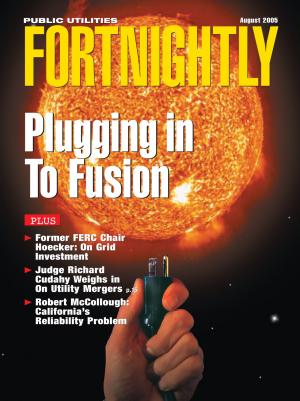Why current estimation models set allowed ROE too low.
Drs. Lawrence Kolbe and Michael J. Vilbert are principals, and Dr. Bente Villadsen is a senior associate at The Brattle Group. The authors would like to thank Stewart C. Myers and James A Read Jr. for helpful discussions on this topic over a period of years, and Dan Harris, Matthew P. O’Loughlin, and Richard A. Patterson for helpful comments on earlier drafts of this paper. Opinions expressed in this article, as well as any errors or omissions, are the authors’ alone. Contact the authors at www.brattle.com. A more detailed discussion of the principles covered in this paper is available in The Brattle Group, The Effect of Debt on the Cost of Equity in a Regulatory Setting, Washington: Edison Electric Institute (2005).
Estimated costs of equity for utilities are, like interest rates, very low by historical standards. A standard capital asset pricing model (CAPM) value might be 9 percent,1 although some analysts might argue for much lower values.2 Discounted cash flow (DCF) methods may produce a wider range of answers, due to variations in the growth rates selected, but many of those answers will be low by historical standards, too.3

These low findings are based in part on problems with the underlying models. For example, the CAPM long has been known to underestimate the cost of equity of low-beta stocks and to overestimate the cost of equity of high-beta stocks.4 However, often there is a more fundamental problem that rate regulation in North America usually overlooks: a material mismatch between the capital structure at which the cost of equity is estimated and the ratemaking capital structure to which it is applied.5 A material capital structure mismatch, which occurs frequently, can lead to material misestimates of the appropriate allowed return on equity, perhaps on the order of 2 percentage points. That is, a 9 percent estimate of the cost of equity can imply an allowed rate of return on equity of 11 percent.

